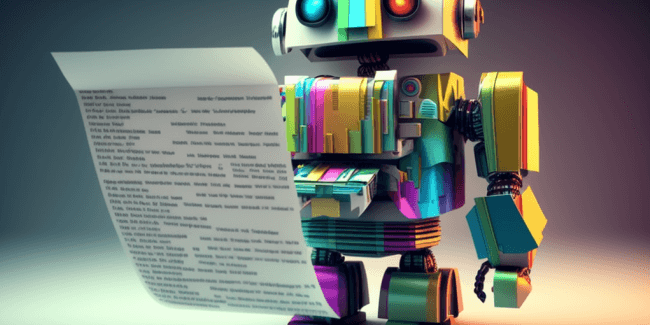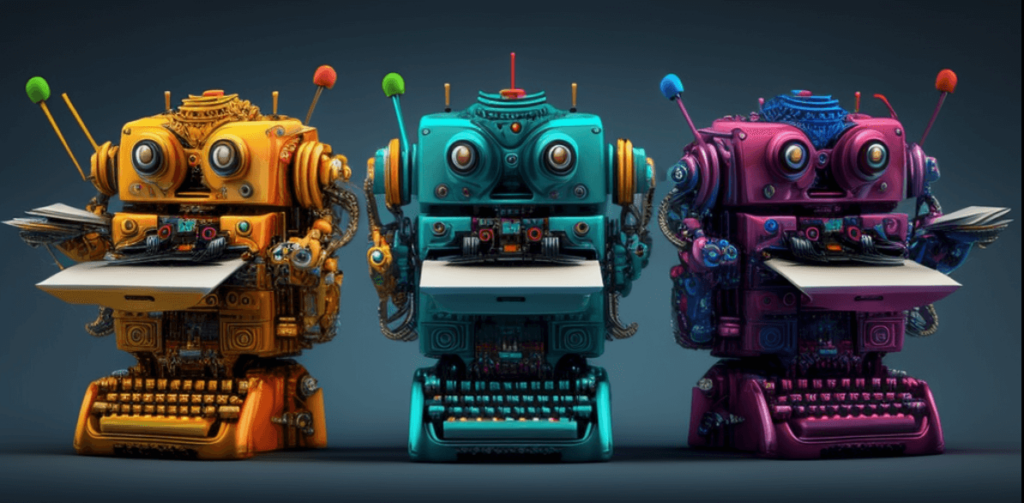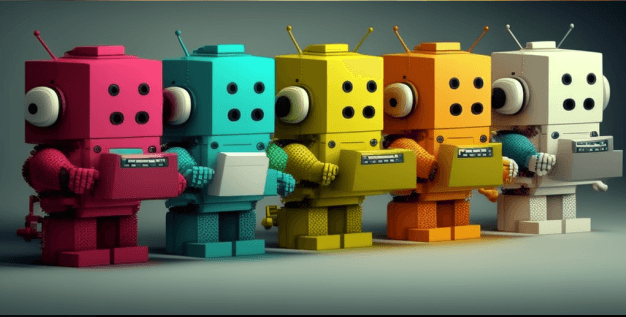In a world where information is at our fingertips, we rely on intelligent systems like ChatGPT to provide us with accurate and relevant responses. But have you ever wondered if those answers are truly original? Are they the product of the model’s understanding and creativity, or are they merely replicas of previously encountered information?
It’s a question that piques our curiosity and challenges us to unravel the inner workings of this AI marvel.
So, let’s embark on this intellectual journey and uncover the truth about the uniqueness of ChatGPT’s answers. Are you ready?
Understanding ChatGPT
To comprehend how ChatGPT operates, we need to delve into the fascinating world of artificial intelligence. At its core, ChatGPT is powered by advanced AI technology called Transformer models, with OpenAI’s GPT-3 being its prominent framework.
These models are trained on vast amounts of text data, absorbing the nuances of language, grammar, and context along the way. They learn to predict what comes next in a given sentence or paragraph, enabling them to generate coherent and human-like responses.
Imagine ChatGPT as a master chef in a bustling kitchen. The AI model has been trained with numerous recipes (text data), learning the ingredients, techniques, and flavors of various cuisines. When you ask a question or provide a prompt, it’s like handing the chef a list of ingredients and asking them to whip up a dish.
ChatGPT’s “cooking” process involves combining its understanding of language with the information it has absorbed during training, resulting in a tailored and seemingly intelligent response.
How does ChatGPT Generate Text?
Now, let’s take a closer look at how ChatGPT generates its text. When you pose a question or provide a prompt, the model springs into action. It examines the context and keywords in your input, drawing from its vast knowledge base to generate a relevant response. But how does it do that?
Think of ChatGPT as a skilled storyteller. You provide it with the beginning of a story, and it uses its linguistic prowess to craft a continuation that fits the narrative.
However, unlike human storytellers who invent new tales from scratch, ChatGPT relies on the patterns and information it has learned during training to piece together its response.
Let’s say you ask ChatGPT for advice on improving your basketball skills. It analyzes the keywords, understands the topic, and generates a response based on what it has learned from basketball-related text sources.
It might offer tips on shooting form, dribbling techniques, or mental strategies employed by professional players.
While the response feels personalized, it’s important to remember that ChatGPT’s answers are not the product of its personal experiences or independent thinking. Rather, they stem from the vast corpus of text it has been trained on.
Factors influencing the uniqueness of ChatGPT’s answers

In our exploration of ChatGPT’s uniqueness, three key factors come into play. We will examine the role of randomness in answer generation, the impact of the input prompt, and the influence of the model’s temperature setting. By understanding these elements, we aim to shed light on the intricacies of ChatGPT’s distinctiveness.
The Role of Randomness in Answer Generation
One of the factors that contribute to the uniqueness of ChatGPT’s answers is randomness. Just like life’s unpredictable twists and turns, ChatGPT adds a touch of unpredictability to its responses. This randomness helps prevent it from regurgitating the same answer for every query, making each interaction a bit more exciting.
Imagine you’re asking ChatGPT for advice on what book to read next. With the randomness factor at play, it might recommend a captivating mystery novel one time and a thought-provoking science fiction masterpiece the next. It keeps things fresh and avoids a monotonous loop of repetitive answers.
Exploring the Impact of the Input Prompt
The input prompt you provide to ChatGPT plays a crucial role in shaping its responses. It’s like giving the model a starting point, a guiding light to steer its path. The way you frame your question or prompt can influence the angle or perspective of the answer you receive.
For example, let’s say you ask ChatGPT about the impact of social media on mental health. If you phrase your prompt as,
“Can you provide statistics on the negative effects of social media?”
The response might focus on research findings and data-driven insights. However, if you ask,
“How can we maintain a healthy balance between social media and mental well-being?”
The emphasis might shift towards offering tips and strategies for managing online presence.
So, remember, when interacting with ChatGPT, the way you phrase your questions or prompts can significantly shape the direction of the answers you receive.
It’s like having a conversation with a knowledgeable friend who responds based on how you frame the topic.
You may also like 📖
The influence of the model’s temperature setting on the variability of responses
Another aspect that affects the uniqueness of ChatGPT’s answers is the model’s temperature setting. This setting determines the level of randomness in its responses. A higher temperature value introduces more randomness, leading to diverse and creative outputs, while a lower value promotes more focused and deterministic responses.
To illustrate this, let’s say you ask ChatGPT to describe the color blue. With a high-temperature setting, you might get imaginative and poetic descriptions like “the cerulean hue of a clear sky” or “a shimmering cascade of sapphire.”
But with a lower temperature setting, the answers might be more straightforward, such as “a primary color associated with calmness” or “a shade often used to represent loyalty.”
By adjusting the temperature setting, you can explore different flavors of responses from ChatGPT, ranging from whimsical and imaginative to concise and precise. It’s like tuning a radio to different frequencies to discover various music genres.
Comparing different responses to identical prompts
It’s intriguing to observe how ChatGPT can generate different responses to the same prompt. Let’s take a look at a few examples to see this in action:
Prompt: “Tell me about the benefits of exercise.”
“Regular exercise can improve cardiovascular health, boost mood, and increase overall fitness levels.”
Response 1
“Engaging in physical activity has numerous advantages, such as enhancing cognitive function, reducing stress, and promoting longevity.”
Response 2
Prompt: “How can I become a better public speaker?”
“Improving public speaking skills requires practice, confidence-building techniques, and mastering effective body language.”
Response 1
“To excel as a public speaker, focus on storytelling, engaging with your audience, and honing your vocal delivery.”
Response 2
Prompt: “What is the capital of France?”
“The capital of France is Paris, renowned for its iconic landmarks like the Eiffel Tower and Louvre Museum.”
Response 1
“Paris, the enchanting capital city of France, is known for its rich history, culinary delights, and vibrant culture.”
Response 2
As you can see, even though the prompts are identical, ChatGPT generates varied responses, offering different perspectives and aspects related to the topic at hand.
Amazon shared 67 ways its staff could leverage ChatGPT for increased productivity
B. Analysis of why differences occur:
The differences in ChatGPT’s responses can be attributed to several factors. One key factor is the training data the model has been exposed to. ChatGPT learns from a wide range of sources, including books, articles, and websites. Therefore, its responses reflect the diverse information it has absorbed during training. This variation in data sources can lead to different perspectives and nuances in its answers.
Furthermore, the role of randomness also plays a part. As mentioned earlier, ChatGPT introduces a degree of randomness in its response generation. This helps avoid repetitive answers and adds an element of surprise. The model can explore different paths based on the same prompt, resulting in distinct outputs.
Additionally, the input prompt itself influences the responses. Even slight variations in how a question is phrased or the specific details mentioned can guide ChatGPT to focus on different aspects or provide alternative perspectives. For instance, a prompt asking for the “benefits of exercise” versus “reasons to engage in physical activity” may elicit slightly different responses.
It’s important to note that while ChatGPT strives to provide informative and helpful responses, its answers are based on the patterns and information it has learned during training. It does not possess personal experiences or subjective opinions. So, the variations in responses are a reflection of the AI’s ability to draw from its extensive knowledge base and generate tailored answers, rather than pure subjectivity.
By observing and analyzing these different responses to identical prompts, we gain insights into the complexities and intricacies of ChatGPT’s generation process, highlighting its adaptability and ability to offer diverse perspectives on various topics.
Case Studies
Case study 1: User experiences highlighting the uniqueness of responses
Let’s take a peek into some user experiences that highlight the unique responses generated by ChatGPT:
Sarah, a student, asked ChatGPT about the best study techniques. She received two distinct responses. The first emphasized the effectiveness of active recall and spaced repetition, while the second focused on the benefits of creating visual aids and using mnemonic devices. Both responses offered valuable insights, but their approaches differed, showcasing the individuality of ChatGPT’s answers.
John, an aspiring chef, sought ChatGPT’s advice on creating a signature dish. To his surprise, he received contrasting responses. The first suggested experimenting with fusion cuisine, while the second recommended drawing inspiration from local ingredients and traditional cooking methods. These differing perspectives allowed John to explore various creative avenues.
Case study 2: Situations where ChatGPT gives similar answers
While ChatGPT’s uniqueness is often evident, there are instances where it generates similar answers due to the nature of the prompt or the underlying knowledge it has acquired. Let’s explore a couple of scenarios:
“What is the square root of 25?”
Response 1: “The square root of 25 is 5.”
Response 2: “The square root of 25 is equal to both positive and negative 5.”
In this case, the mathematical nature of the prompt restricts the range of possible answers, leading ChatGPT to provide similar responses. It aligns with the inherent mathematical properties rather than offering alternative interpretations.
“What is the capital of Spain?”
Response 1: “The capital of Spain is Madrid.”
Response 2: “Madrid serves as the capital city of Spain.”
In this example, the prompt is straightforward, leaving little room for divergence in responses. ChatGPT tends to provide consistent answers to factual queries, as the information regarding the capital of Spain is widely known and documented.
Limitations and potential issues
While ChatGPT strives to provide unique answers, there are certain factors that can lead to similarities or lack of uniqueness in its responses. Here are a few reasons why ChatGPT might not always offer distinct answers:
Training data limitations
ChatGPT’s responses are based on the patterns and information it has learned during training. If the training data doesn’t contain diverse or contrasting viewpoints on a particular topic, it may struggle to generate unique answers.
For example, if the training data predominantly presents a specific perspective on a controversial issue, ChatGPT may lean towards providing similar responses reflecting that perspective.
Ambiguity in prompts
Sometimes, prompts can be ambiguous or open to interpretation. In such cases, ChatGPT might generate similar responses as it attempts to navigate the uncertainty.
For instance, if the prompt asks for “tips to be more productive,” ChatGPT may provide commonly known advice such as prioritizing tasks or minimizing distractions, resulting in less uniqueness.
Issues related to ChatGPT’s knowledge cutoff
ChatGPT’s responses are influenced by the information it was trained on, which means it has a knowledge cutoff. This can lead to potential issues, such as:
Outdated information: ChatGPT’s training data might not include the most recent developments or updates. Therefore, if you ask for the latest news or information, ChatGPT may provide responses that are accurate up until its knowledge cutoff date, but might not reflect the most current information.
Incomplete or biased knowledge: ChatGPT’s training data is sourced from the internet, which can contain incomplete or biased information. While efforts are made to mitigate biases during training, some biases may still persist, leading to potential issues in the responses generated.
Lack of real-time context: ChatGPT operates in a context-agnostic manner. It doesn’t have access to real-time information or personal experiences. Therefore, its responses may lack context-specific details or fail to consider recent events that have occurred after its knowledge cutoff.
It’s important to be mindful of these limitations and potential issues when interacting with ChatGPT. While it can provide valuable insights and engage in informative conversations, it’s essential to cross-verify information, seek multiple perspectives, and stay up-to-date with the latest developments to ensure accurate and comprehensive knowledge.
Plagiarism Checkers

As ChatGPT generates text that resembles human-like responses, it’s natural to wonder about the originality and uniqueness of the content it produces. One way to address this concern is by utilizing Plagiarism checkers to ensure the authenticity and integrity of the information.
While it may not be a foolproof solution, using Plagiarism checkers can be a helpful step in evaluating the uniqueness of ChatGPT’s responses. Let’s take a look at three recommended Plagiarism checkers to assist you in this process:
Grammarly
Known for its robust grammar and spelling checks, Grammarly offers a Plagiarism checker feature that can help analyze the uniqueness of ChatGPT’s content. It compares the generated text against a massive database of web pages and documents to identify potential matches or similarities. Grammarly provides a similarity score and highlights any detected matches, allowing you to assess the originality of ChatGPT’s responses.
Copyscape
Copyscape is a widely-used online tool designed specifically for detecting plagiarism. It scans the internet for similar content and highlights any potential matches. You can simply copy and paste ChatGPT’s responses into Copyscape, and it will provide a report indicating if any similar text exists elsewhere. Copyscape is commonly used by content creators and educators to ensure the uniqueness of written content.
Turnitin
Primarily utilized in educational institutions, Turnitin is a comprehensive Plagiarism detection tool. It compares submitted text against an extensive database of academic sources, internet content, and previously submitted works. While Turnitin is typically used for evaluating student assignments, it can also be employed to analyze the originality of ChatGPT’s responses. Its advanced algorithms can identify similarities and provide a detailed report on any potential matches found.
Important to Note:
While Plagiarism checkers can be helpful tools, it’s essential to keep in mind their limitations. Since ChatGPT generates responses based on the vast training data it has absorbed, it’s possible that the content may have similarities to existing texts without directly copying them. Plagiarism checkers may not be able to distinguish between intentionally plagiarized content and text that coincidentally aligns with existing information.
You may also like 📖
- How ChatGPT can help you find your next perfect getaway
- How to use ChatGPT as a Teacher in the Early Years Classroom
- How to use ChatGPT to create a yoga plan that aids weight loss
- Using ChatGPT to spark conversations for dates and couples
- How to use ChatGPT to write the best wedding speech ever
- How to use ChatGPT to create Fitness Plans that get results quick
- How to use ChatGPT to create a Budget that actually works
FAQs
ChatGPT is an advanced language model designed by OpenAI. It generates answers by using Transformer models and drawing from its extensive training on a wide range of text data. It learns patterns, context, and language nuances to generate human-like responses.
ChatGPT’s answers can be unique, but they are also influenced by various factors. The use of randomness in answer generation, the impact of the input prompt, and the model’s temperature setting can contribute to the uniqueness of its responses.
Yes, ChatGPT can generate different responses to the same prompt. Due to randomness and its training on diverse data, it can offer distinct perspectives, suggestions, or details even when faced with identical prompts.
Differences in ChatGPT’s responses can arise from the training data it has been exposed to, the role of randomness, and the influence of the input prompt. These factors contribute to variations in the information, perspectives, or details it provides.
Yes, ChatGPT can give similar answers in certain situations. For factual or specific prompts, where the information is well-known or limited, the responses may be consistent. However, in other cases, ChatGPT strives to offer diverse and personalized answers.
While ChatGPT’s responses are generated based on the information it has learned, it’s important to approach them with caution. They should be cross-verified, and multiple perspectives should be considered to ensure accuracy and avoid potential biases or outdated information.
Plagiarism checkers can be useful tools to evaluate the uniqueness of ChatGPT’s answers. Tools like Grammarly, Copyscape, and Turnitin can compare the generated text against existing sources to identify potential matches or similarities.
Plagiarism checkers may not consider the context, creativity, or underlying knowledge cutoff of ChatGPT’s responses. They primarily focus on textual matches and may not distinguish between coincidental similarities and intentional plagiarism.
No, it’s advisable to use Plagiarism checkers as one of several tools in assessing the uniqueness of ChatGPT’s responses. Considering factors such as context, creativity, and the AI’s ability to provide tailored and informed answers is crucial.
To maximize the benefit of ChatGPT, it’s important to approach it as a valuable tool that can provide insights and suggestions. Use it as a starting point for further research, cross-verify information, and seek multiple perspectives to gain a comprehensive understanding of the topic at hand.
How to use ChatGPT to 10x your Instagram account in 7 steps

We teach you how to build your own super-useful prompts
View our Ebook, with a step-by-step
walkthrough to conquer Instagram using ChatGPT even if you are not tech-savvy
Conclusion
In our exploration of ChatGPT’s uniqueness, we discovered several key factors at play. While these factors contribute to the uniqueness of ChatGPT’s answers, there are also instances where similarities or limitations arise, such as when prompts are specific or the training data has limitations.
As AI technology continues to evolve, there are exciting possibilities for future research and improvements. Addressing the limitations of ChatGPT’s uniqueness, such as training data biases and knowledge cutoff, could enhance the accuracy and comprehensiveness of its responses. Advancements in training methodologies and incorporating real-time context could also contribute to more nuanced and up-to-date answers.
By embracing ChatGPT’s strengths and understanding its limitations, users can navigate the information landscape with discernment and curiosity.




